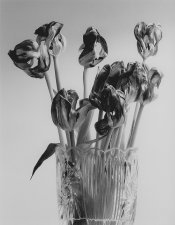Yes, indeed; especially Vermeer. While artists of that time served long apprenticeships learning their materials and tools, they were masters of light. Now, in complex studios, we seem more concerned with eliminating every possible flaw than with using simple lighting to honestly present the subject. Photographers can show off their bag of tricks and mastery of contemporary styles, or can let the subject, not the technique, dominate the photograph.
Personally I don't find the comparisons real helpful. Touted artists of days gone by lived in a time where very few people were "pretty" and not for long. Most people lost their teeth, none but the aristocracy wore makeup and the artists painted what was expected of him. If he was doing commissioned work he probably tarted up the people to some extent one way or the other (height, weight) etc.
In today's world, commissioned photographers will enhance the subject for marketing purposes, for vanity purposes and because people actually look better than the "old" days.
People who photograph for themselves or for photojournalist work, can do what they want as to visual enhancement. And that being said the craggy old man or the wrinkled old woman is a bit of cliche as well.
Painters had the use of photoshop in their heads, photographers, have the luxury and the burden of making their subjects look various ways and the learning of technique is important in both. In photography, the more dramatic the lighting the less flattering it generally is on people and the more retouching is needed. Unless again, you're going for the craggy wrinkled look, which is accentuated by dramatic lighting. The bottom line is, the lighting defines the drama, and the photographer has to decide if that's too harsh for the subject. A painter could use the dramatic lighting and back off the "trauma" it caused.








